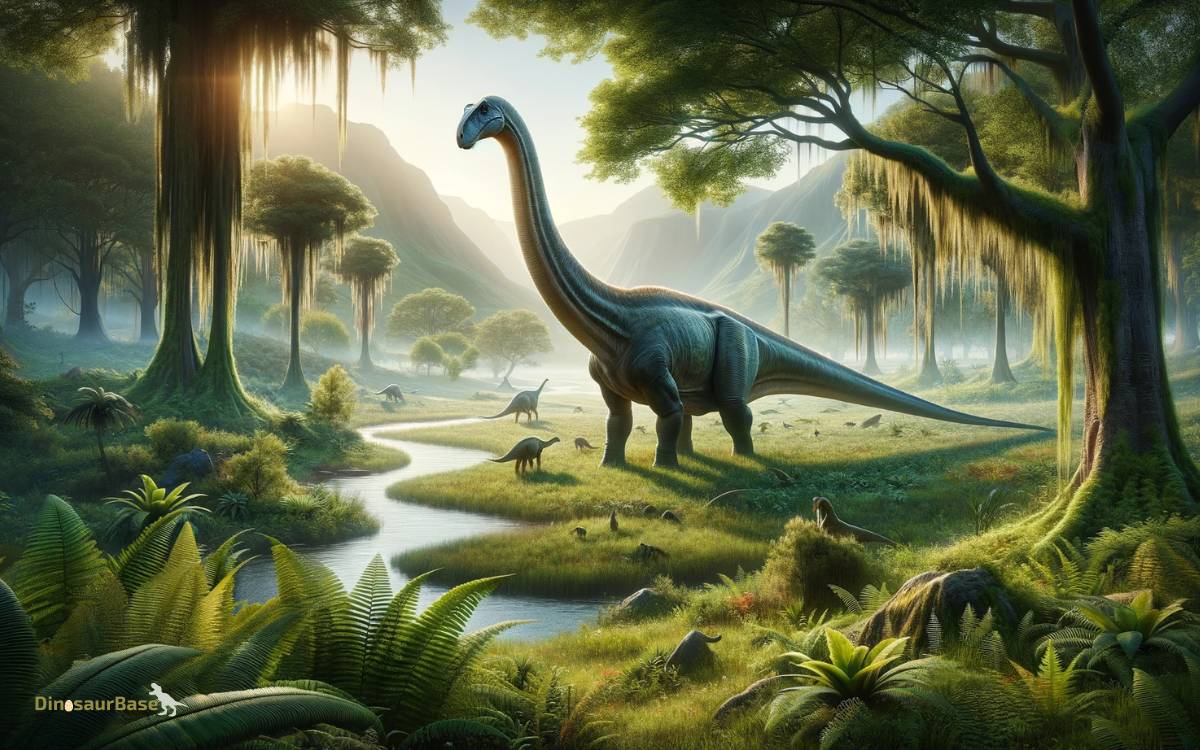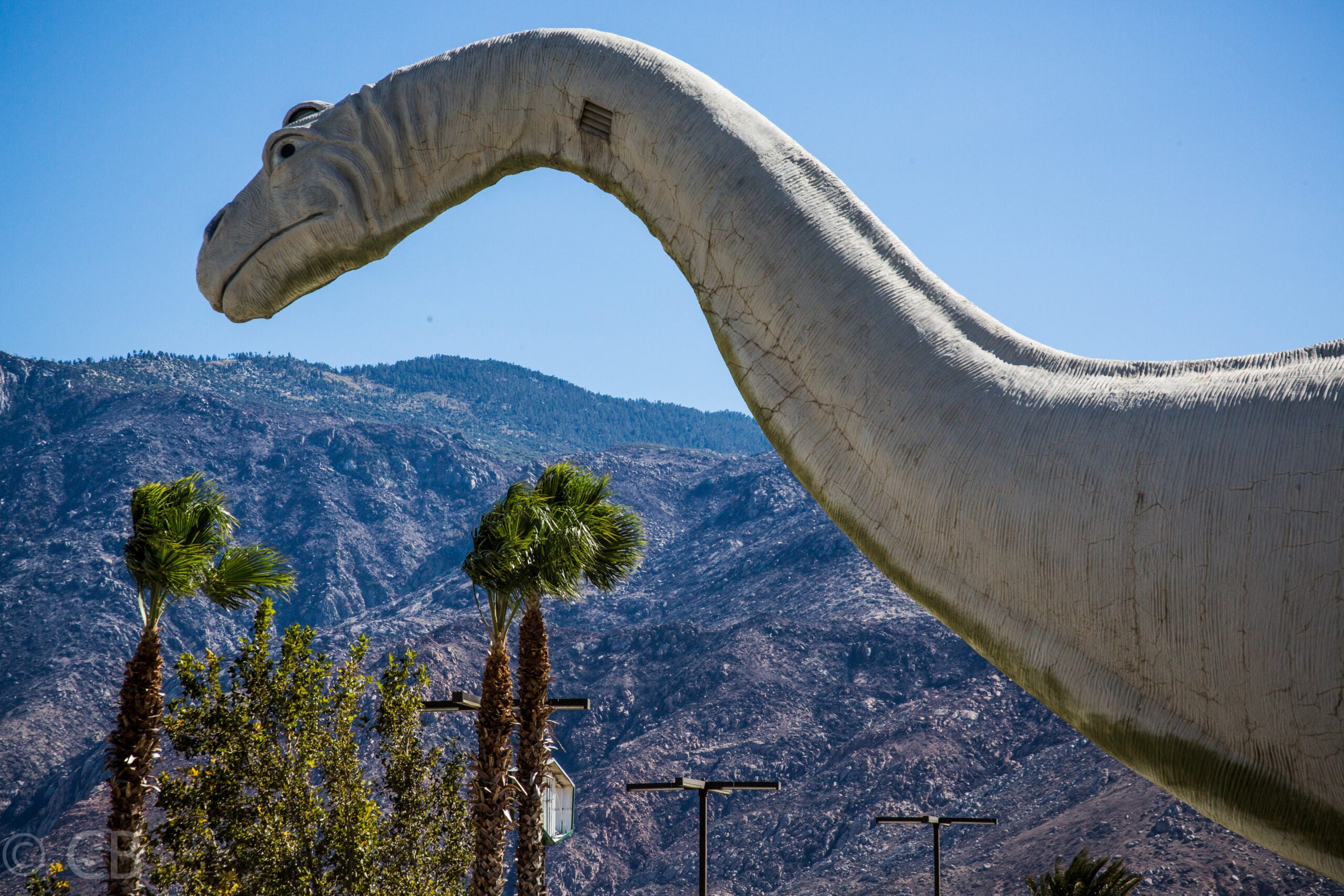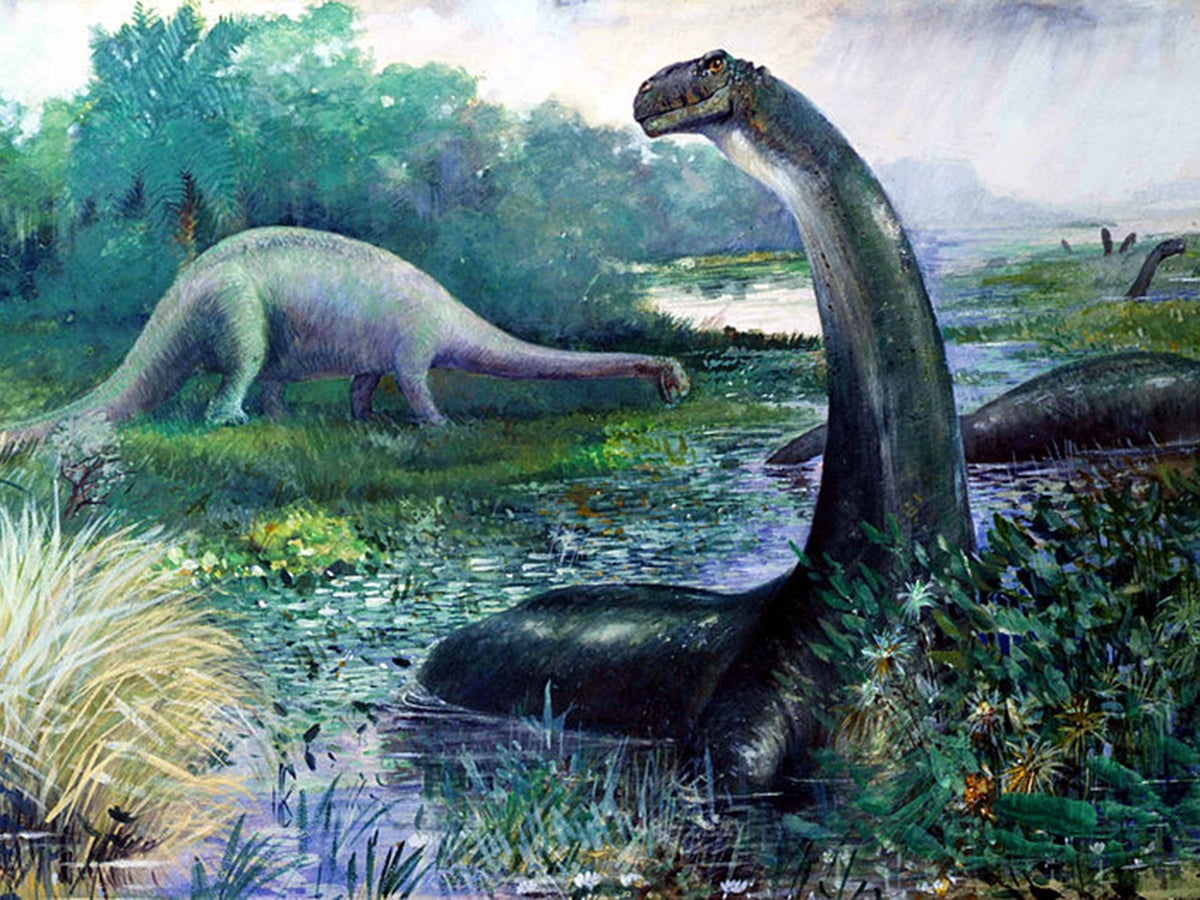Identifying a Real Dinosaur: Is Brontosaurus Included?
Brontosaurus is indeed a real dinosaur, revalidated by scientists after a period of taxonomic uncertainty. Identifying a genuine dinosaur species, such as Brontosaurus, involves examining fossil evidence and scientific consensus.
Brontosaurus, meaning “thunder lizard,” is a genus of gigantic sauropod dinosaurs that roamed North America during the Late Jurassic period.
For many years, its existence was mired in controversy. In the late 19th century, paleontologists mistook it for a similar dinosaur, Apatosaurus, leading to the conclusion that “Brontosaurus” was a misnomer.
It was not until a comprehensive study in 2015 that the Brontosaurus regained its status as a distinct species.
Unveiling a real dinosaur like Brontosaurus requires meticulous research, including analyzing bone structures and comparing them with known species.
This ensures that our understanding of these prehistoric creatures is as accurate as possible. For those intrigued by paleontology, the tale of the Brontosaurus is a testament to the evolving nature of scientific inquiry.

Debunking Dinosaur Myths

Credit: www.popsci.com
Dinosaurs spark the imagination, from towering prehistoric giants to the wonders of nature’s past.
But as our fascination deepens, so does the spread of myths. It’s time to clear the fog of fiction and shine a light on the facts—starting with the tale of the Brontosaurus.
Brontosaurus: A Case Study
The Brontosaurus story unfolds like a mystery. Once a beloved character in dinosaur lore, this mighty creature faced an identity crisis for over a century.
Scientists first named it in 1879. But later, they said Brontosaurus didn’t exist—it was actually Apatosaurus.
Recent findings, however, turned the tables yet again, affirming the original name. The Brontosaurus, it seems, is back from extinction, at least in the scientific texts.
Common Misconceptions In Paleontology
- Size Matters: Not all dinosaurs were giants. Some were as small as chickens.
- All About Scales: While many did have scales, some dinosaurs had feathers.
- Lingering Lineage: Dinosaurs didn’t vanish completely—birds are their living descendants.
These points barely scratch the surface of what we often get wrong about these ancient creatures.
By challenging our assumptions, we not only honor history but also enrich our understanding of the natural world.
brontosaurus serves as a perfect example of the evolving nature of our knowledge, inviting us to keep digging, questioning, and learning—because in science, discovery never goes extinct.
The Brontosaurus Saga
Did you know that the Brontosaurus has been a star of scientific debate for years? This giant reptile’s journey through history is full of discoveries, disputes, and surprises. Let’s embark on a thrilling adventure to uncover the truth about the Brontosaurus.
From Discovery To Dispute
Once a well-known dinosaur, the Brontosaurus’ existence came into question. Unearthed in the late 1800s, it quickly captured hearts. By the early 20th century, scientists scrutinized its authenticity. They made a shocking claim.
The Brontosaurus might not be a unique species at all. This created a stir in the paleontology world. Could such a famous dinosaur be mistaken for another?
Experts compared skeletons and found similarities with the Apatosaurus. They suggested that the Brontosaurus was simply an older, fully-grown version.
This revelation led to years of debate and reclassification, turning the Brontosaurus into somewhat of a paleontological legend.
The Twists And Turns Of Dinosaur Classification
The tale of dinosaur classification is winding and complex. The fossil record is incomplete, often leaving scientists with puzzles.
Pieces from different species can be mistaken for one another. As new discoveries emerge, the classification system adapts. The Brontosaurus is a prime example.
Recent studies have brought new insights. Advanced technologies and detailed analysis have suggested the Brontosaurus may indeed be distinct from the Apatosaurus.
This sparked excitement in the scientific community. Could the beloved Brontosaurus make an official comeback?
As a result, the classification of these prehistoric giants remains fluid. With each new fossil unearthed, our understanding can change.
The Brontosaurus story illustrates the evolving nature of science itself, highlighting the importance of staying curious and open to new information.
The Criteria For Real Dinosaurs
When we talk about dinosaurs, we refer to creatures that roamed the Earth millions of years ago. But what makes a dinosaur a real dinosaur?
It’s not just size or strength. It’s about certain criteria that experts use to identify these prehistoric giants.
Dive into the fascinating world of dinosaur discovery and see if the mighty Brontosaurus makes the cut!
Skeletal Authenticity
Real dinosaurs leave behind bone clues. Here’s what to look for:
- Complete skeletons: More bones mean more proof.
- Unique features: We check for specific bone traits.
- Joint connections: How did the bones fit together?
- Fossil quality: Clear, well-preserved bones tell more.
Temporal Placement In Geological History
Dinosaurs lived during specific geologic periods. The timeline matters:
| Period | Years Ago | Dinosaurs Present? |
|---|---|---|
| Triassic | 250-200 million | Yes |
| Jurassic | 200-145 million | Yes |
| Cretaceous | 145-66 million | Yes |
| Paleogene | 66-23 million | No |
We find credible dinosaur remains in rocks from the Triassic, Jurassic, and Cretaceous periods. Dating fossils is key. Rocks tell us when these creatures lived. Real dinosaurs don’t come from periods with no dinosaurs!

Credit: www.independent.co.uk
Revisiting The Brontosaurus Debate
For years, the existence of the Brontosaurus as a true dinosaur species sparked debate among paleontologists.
Was it distinctive enough to warrant its own name, or was it simply an Apatosaurus with a different moniker?
Enthusiasts and scholars alike continue to be captivated by this controversy. Let’s delve into the latest on this prehistoric puzzle.
Recent Findings And Theories
The Brontosaurus once faced extinction – not from an asteroid, but from scientific textbooks. A 1903 study argued that Brontosaurus was merely an adult Apatosaurus. This notion held firm until evidence to the contrary emerged over a century later.
- New anatomical comparisons revealed distinct differences in the neck, backbones, and ankle bones.
- Detailed analyses from 2015 reignited the debate, suggesting the Brontosaurus merits its own genus status.
- This shift in perspective followed a comprehensive review of the Diplodocidae family, which both creatures belong to.
Table 1 below summarizes the contrasting features:
| Feature | Apatosaurus | Brontosaurus |
|---|---|---|
| Neck | Stout and wide | Longer and less robust |
| Backbones | Less divided | Highly divided beam-like structures |
| Ankle bones | Broad and flat | Subtly different with a more pronounced heel |
The Status Of Brontosaurus Today
Today, the Brontosaurus strides back into the spotlight, moving past its misrepresented past. After the reevaluation of skeletal distinctions, the scientific community leans towards recognizing the Brontosaurus as its own genus once again.
Here’s where it stands:
- Several peer-reviewed studies now endorse the Brontosaurus as unique, separate from Apatosaurus.
- The Brontosaurus name resonates with the public, embodying the majestic creatures of our planet’s distant past.
- Museums and science texts are increasingly reflecting this updated classification.
In essence, the Brontosaurus represents more than just a name. It exemplifies the evolving nature of scientific understanding and the importance of continuous discovery.
Implications In Paleontology
When we dig into Earth’s ancient past, we uncover mysteries and marvels. The discovery of dinosaurs has always sparked excitement and curiosity. Identifying these prehistoric creatures requires careful science.
Mistakes can happen. The Brontosaurus, with its iconic long neck, once fell victim to such an error.
We now explore how paleontology adapts and grows from misclassifications. Specimens labeled incorrectly can mislead studies. They can change our understanding of history.
How Misclassifications Affect Science
Scientific progress hinges on accurate data. Misidentifying dinosaurs does more than ruffle a few academic feathers; it can alter research courses.
When the Brontosaurus was corrected to Apatosaurus, it wasn’t a small footnote. It shifted the narrative of dinosaur evolution.
- Catalyzes new research to confirm findings.
- Demands a review of related scientific literature.
- Affects reconstruction of the dinosaur family tree.
Educational Impact And Public Perception
Misidentifications reach beyond the scientific community. They influence textbooks, museum exhibits, and how the public sees dinosaurs.
The Brontosaurus’s journey from misclassification to recognition shows this well.
| Aspect | Impact of Misclassification |
|---|---|
| Educational Content | Requires updates to ensure accurate information is taught. |
| Museum Displays | Must be revised to reflect current understanding. |
| Public Knowledge | Shifts as new findings correct previous misconceptions. |
As the fossil record expands, so does our grasp of the majestic creatures that roamed Earth. Science evolves, tearing down faulty ideas and building stronger, evidence-backed understanding.
The Brontosaurus’s story illustrates paleontology’s dynamic nature, forever questing to piece together Earth’s prehistoric puzzle.
Is Brontosaurus Considered a Real Dinosaur and Did They Coexist with T. Rex?
The Brontosaurus, although once considered a real dinosaur, has been debunked as a separate species and is now classified as a type of Apatosaurus. As for coexisting with T. Rex dinosaurs in their natural habitat, it’s unlikely since the Brontosaurus lived during the Late Jurassic period, while the T. Rex thrived during the Late Cretaceous period.
Frequently Asked Questions Of Identifying A Real Dinosaur: Is Brontosaurus Included?
Is Brontosaurus An Actual Dinosaur?
Yes, Brontosaurus is now recognized as a distinct genus of dinosaurs. After a period of scientific debate, recent studies reaffirmed its status separate from Apatosaurus.
Why Is It No Longer Called A Brontosaurus?
The Brontosaurus was reclassified as the Apatosaurus in 1903 after scientists realized both were the same species. Later discoveries, however, have led to consideration of reviving the Brontosaurus as a distinct genus.
Is Brontosaurus A Valid Species?
Yes, Brontosaurus is recognized as a valid genus of dinosaur after substantial scientific evidence and research revisions.
Is A Brachiosaurus A Real Dino?
Yes, Brachiosaurus was a real dinosaur known for its long neck. It lived during the Late Jurassic period.
Conclusion
Navigating the prehistoric world is fascinating. The brontosaurus saga underscores the volatile nature of paleontology. While debates may continue, recent research supports the distinct status of this gentle giant.
Readers captivated by these incredible creatures can find solace in the rich history still under exploration.
Share this post to spark curiosity in fellow dinosaur enthusiasts!





